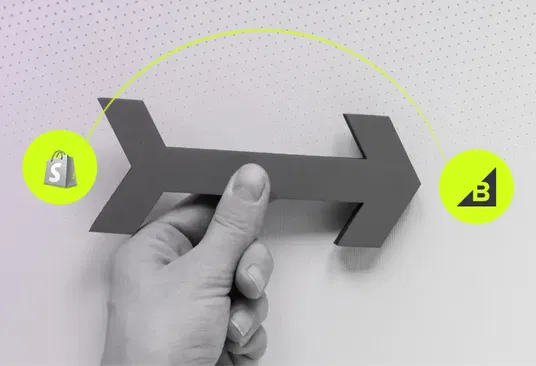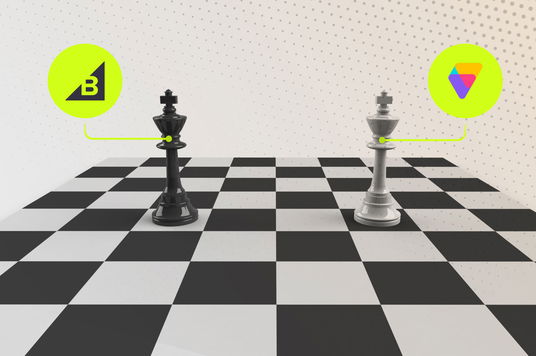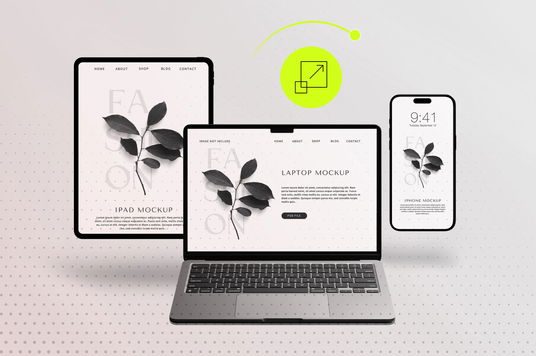Selling Educational Toys Online: What Parents Look for in 2025

- The Modern Parent's Educational Toy Shopping Journey
- Age-Appropriate Filtering and Learning Style Tags
- Gamified Discovery Tools That Engage Parents
- Clear Educational Value Communication
- Product Page Callouts for Skill Development
- Parent Reviews and Learning Outcomes
- Mobile-First Shopping Experience
- Converting Browsers into Buyers
- 🎯 Key Takeaways
- Frequently Asked Questions
- Ready to Choose the Right Development Partner?
- About 1Center
The Modern Parent's Educational Toy Shopping Journey
The educational toy market has transformed dramatically in 2025, with parents becoming increasingly sophisticated in their purchasing decisions. Today's parents don't just buy toys—they invest in their children's development, seeking products that combine fun with measurable learning outcomes.
Modern parents spend an average of 23 minutes researching each educational toy purchase, comparing learning benefits, age appropriateness, and developmental impact. This shift has created new opportunities for toy retailers who understand what drives purchasing decisions in the digital age.
Successful baby and kids ecommerce platforms recognize that parents need more than product descriptions—they need confidence that their purchase will contribute meaningfully to their child's growth and development.
— Dr. Sarah Chen, Child Development Research Institute"Parents today are looking for toys that grow with their children and provide clear developmental benefits. The most successful educational toy retailers are those who can clearly communicate learning outcomes and make the discovery process engaging for parents."
Age-Appropriate Filtering and Learning Style Tags
One of the most critical ecommerce features for educational toy stores is sophisticated filtering that goes beyond basic age ranges. Parents need to find toys that match their child's specific developmental stage and learning preferences.
Advanced Age Filtering Systems
Effective tagging toys by age and learning style requires a multi-dimensional approach:
- Developmental Milestones: Tags like "emerging reader," "fine motor development," or "abstract thinking"
- Learning Styles: Visual, auditory, kinesthetic, and mixed-learning preferences
- Skill Progression: Beginner, intermediate, and advanced levels within age groups
- Interest Categories: STEM, creative arts, language development, social skills
Parents appreciate when retailers provide detailed age guidance that considers individual development rather than just chronological age. This personalized approach helps build trust and reduces return rates.
Gamified Discovery Tools That Engage Parents
The most innovative educational toy retailers are implementing gamified toy discovery tools for parents that make the shopping experience both engaging and educational. These tools help parents understand their child's learning needs while discovering appropriate products.
Interactive Assessment Tools
Successful gamified discovery features include:
- Learning Style Quizzes: Short assessments that identify how a child learns best
- Developmental Milestone Trackers: Tools that help parents identify their child's current abilities
- Interest Profilers: Fun questionnaires that reveal a child's preferences and curiosities
- Goal-Setting Wizards: Interactive tools that help parents define learning objectives
These gamified elements not only improve the shopping experience but also position the retailer as a trusted partner in the child's educational journey.
Clear Educational Value Communication
Parents investing in educational toys want to understand exactly how each product will benefit their child's development. Boosting toy sales with education guides has become a cornerstone strategy for successful retailers.
Educational Content That Converts
Effective educational value communication includes:
- Learning Outcome Descriptions: Clear explanations of what skills the toy develops
- Play-Based Learning Guides: Instructions on how to maximize educational value
- Developmental Progression Maps: Showing how the toy fits into a child's learning journey
- Expert Endorsements: Recommendations from educators and child development specialists
Retailers who invest in comprehensive educational content see 34% higher conversion rates and 28% lower return rates compared to those with basic product descriptions.
— Maria Rodriguez, Pediatric Learning Specialist"The most successful educational toy retailers don't just sell products—they sell peace of mind. Parents want to know they're making the right choice for their child's development, and clear educational value communication provides that confidence."
Product Page Callouts for Skill Development
Strategic PDP callouts for language/math/creative skills help parents quickly identify toys that align with their child's learning needs and interests. These callouts serve as visual shortcuts that communicate value at a glance.
Essential Skill Development Callouts
Effective product pages feature prominent callouts for:
- Language Development: Vocabulary building, reading readiness, communication skills
- Mathematical Thinking: Number recognition, pattern identification, logical reasoning
- Creative Expression: Artistic skills, imaginative play, creative problem-solving
- Motor Skills: Fine motor development, hand-eye coordination, physical dexterity
- Social-Emotional Learning: Empathy, cooperation, emotional regulation
These callouts should be visually distinct, using icons and color coding to help parents quickly scan and identify relevant benefits. The most effective implementations use a combination of badges, progress bars, and skill level indicators.
Parent Reviews and Learning Outcomes
Parent reviews have evolved beyond simple star ratings to include detailed feedback about learning outcomes and developmental impact. Smart retailers encourage and showcase reviews that highlight educational benefits.
Structured Review Systems
Advanced review systems prompt parents to share:
- Age Appropriateness: Whether the toy matched their child's developmental stage
- Learning Outcomes: Specific skills their child developed through play
- Engagement Level: How long the toy held their child's interest
- Educational Value: Whether the toy met their learning expectations
These structured reviews provide valuable social proof while helping other parents make informed decisions about educational value and age appropriateness.
Mobile-First Shopping Experience
With 73% of educational toy purchases now initiated on mobile devices, retailers must prioritize mobile optimization. Parents often research and compare toys during brief moments throughout their day.
Mobile-Optimized Features
Essential mobile features for educational toy retailers include:
- Touch-Friendly Filters: Easy-to-use age and skill filters optimized for mobile
- Quick Comparison Tools: Side-by-side product comparisons on small screens
- Visual Learning Indicators: Icons and graphics that communicate educational value quickly
- One-Tap Wishlist: Easy saving for later consideration and gift planning
Mobile optimization extends beyond responsive design to include features specifically designed for the parent shopping journey on smaller screens.
Converting Browsers into Buyers
Converting educational toy browsers into buyers requires understanding the parent mindset and addressing common purchase hesitations. Successful retailers implement strategies that build confidence and reduce decision anxiety.
Conversion Optimization Tactics
Effective conversion strategies include:
- Educational Guarantees: Promises about learning outcomes and developmental benefits
- Age-Appropriate Recommendations: Suggesting complementary toys for continued learning
- Expert Validation: Endorsements from educators and child development professionals
- Progress Tracking Tools: Ways for parents to monitor their child's development
The most successful educational toy retailers understand that parents are investing in their child's future, not just buying a product. This perspective shapes every aspect of the shopping experience.
🎯 Key Takeaways
- Modern parents spend significant time researching educational toys, seeking clear learning outcomes and developmental benefits
- Advanced filtering systems that tag toys by age and learning style are essential for helping parents find appropriate products
- Gamified discovery tools engage parents while helping them understand their child's learning needs
- Clear educational value communication through guides and expert content significantly improves conversion rates
- Strategic PDP callouts for language, math, and creative skills help parents quickly identify relevant benefits
- Mobile optimization is crucial, with 73% of educational toy purchases initiated on mobile devices
- Structured parent reviews that highlight learning outcomes provide valuable social proof for other buyers
Frequently Asked Questions
1. What ecommerce features are most important for educational toy stores?
The most critical features include advanced age and learning style filtering, gamified discovery tools, clear educational value communication, mobile optimization, and structured review systems that highlight learning outcomes.
2. How should educational toys be tagged by age and learning style?
Effective tagging goes beyond basic age ranges to include developmental milestones, learning styles (visual, auditory, kinesthetic), skill progression levels, and specific interest categories like STEM or creative arts.
3. What makes a gamified toy discovery tool effective for parents?
Successful gamified tools include learning style quizzes, developmental milestone trackers, interest profilers, and goal-setting wizards that help parents understand their child's needs while discovering appropriate products.
4. How can education guides boost toy sales?
Education guides that explain learning outcomes, provide play-based learning instructions, show developmental progression, and include expert endorsements build parent confidence and increase conversion rates by up to 34%.
5. What PDP callouts work best for educational toys?
Effective callouts highlight specific skill development areas like language, math, creativity, motor skills, and social-emotional learning using visual elements like icons, badges, and progress indicators.
Ready to Choose the Right Development Partner?
Building a successful educational toy ecommerce platform requires specialized expertise in user experience design, advanced filtering systems, and parent-focused conversion optimization. Our team has extensive experience creating engaging, educational toy shopping experiences that convert browsers into loyal customers.
From gamified discovery tools to sophisticated age-based filtering systems, we understand what modern parents need when shopping for educational toys online.
Schedule Your Free ConsultationAbout 1Center
1Center is a leading ecommerce development agency specializing in creating high-converting online stores for baby and kids brands. Our team combines deep industry knowledge with cutting-edge technology to build platforms that engage parents and drive sales.
We understand the unique challenges of selling educational toys online and have helped numerous clients implement advanced features like gamified discovery tools, sophisticated filtering systems, and mobile-optimized shopping experiences that convert.
Our expertise in baby and kids ecommerce development ensures your platform not only looks great but also provides the functionality modern parents expect when shopping for their children's educational development.
Written byPublished July 11, 2025
1Center


